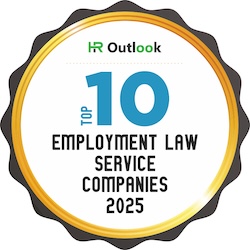Harassment & Hostile Work Environment
Harassment as Unlawful Employment Discrimination
Federal and Colorado law prohibits workplace harassment, including a hostile work environment, when the conduct is based on a legally protected class or trait – meaning, race, color, national origin, sex, sexual orientation, pregnancy, religion, disability, or age.
Harassment based on a protected class, such as race or sex, is unlawful discrimination.
Employees working at virtually every level of authority, in every position, are protected against unlawful harassment.
Private sector employees and federal, state, and local government employees have the right to be free from workplace harassment.
We welcome the opportunity to provide experienced counsel and representation to persons subjected to unlawful harassment.
This practice represents clients asserting harassment and discrimination claims in federal and state court lawsuits and filing discrimination charges with federal, state, and local government agencies.
Steven Murray has successfully represented employees asserting harassment claims in actions before United States District Courts, including the United States District Court for the District of Colorado.
Harassment-Hostile Work Environment Claim
The specific elements of a harassment or hostile environment claim depend on the facts. The claim includes these general elements:
- The conduct was unwelcome.
- The conduct was offensive.
- The conduct was based on a protected trait, such as sex, or directed against the complainant because of the person’s protected class, such as sex.
- The conduct was sufficiently severe or pervasive to alter a term, condition, or privilege of employment by creating an abusive working environment.
- The complainant perceived the environment to be abusive or hostile.
- A reasonable person in the complainant’s circumstances would consider the working environment to be abusive or hostile.
- A basis for employer liability.
Totality of Circumstances
The totality of the circumstances must be considered in evaluating a hostile work environment claim. The conduct is considered cumulatively instead of in isolation. The factors for consideration include:
- Whether the conduct was unwelcome.
- The nature, severity, and frequency of the conduct.
- Whether the conduct was by a co-worker, supervisor, customer or client.
- The effect of the conduct on the complainant’s mental or emotional state.
- Whether others joined in the conduct.
- Whether the conduct was directed at more than one person.
- Whether the conduct was physically threatening.
- Whether the conduct unreasonably interfered with an employee’s work performance.
Employer Liability
An employer is liable for a supervisor’s harassment resulting in a tangible employment action against the aggrieved individual.
A tangible employment action is a significant change in employment status, such as hiring, firing, failing to promote, or reassignment with significantly different responsibilities.
An employer is liable for a hostile work environment when the objectionable conduct was by a co-worker or a person controlled by the employer, and the employer knew or should have known of the hostile environment and failed to take prompt and effective remedial action.
Conclusion
Murray Law welcomes the opportunity to provide legal counsel and representation to persons confronting unlawful workplace harassment based on a protected class under the law. Please call Steven Murray at 720-600-6642.
Resource
The Equal Employment Opportunity Commission [EEOC] provides guidance, explanation, and discussion about harassment. See article.












